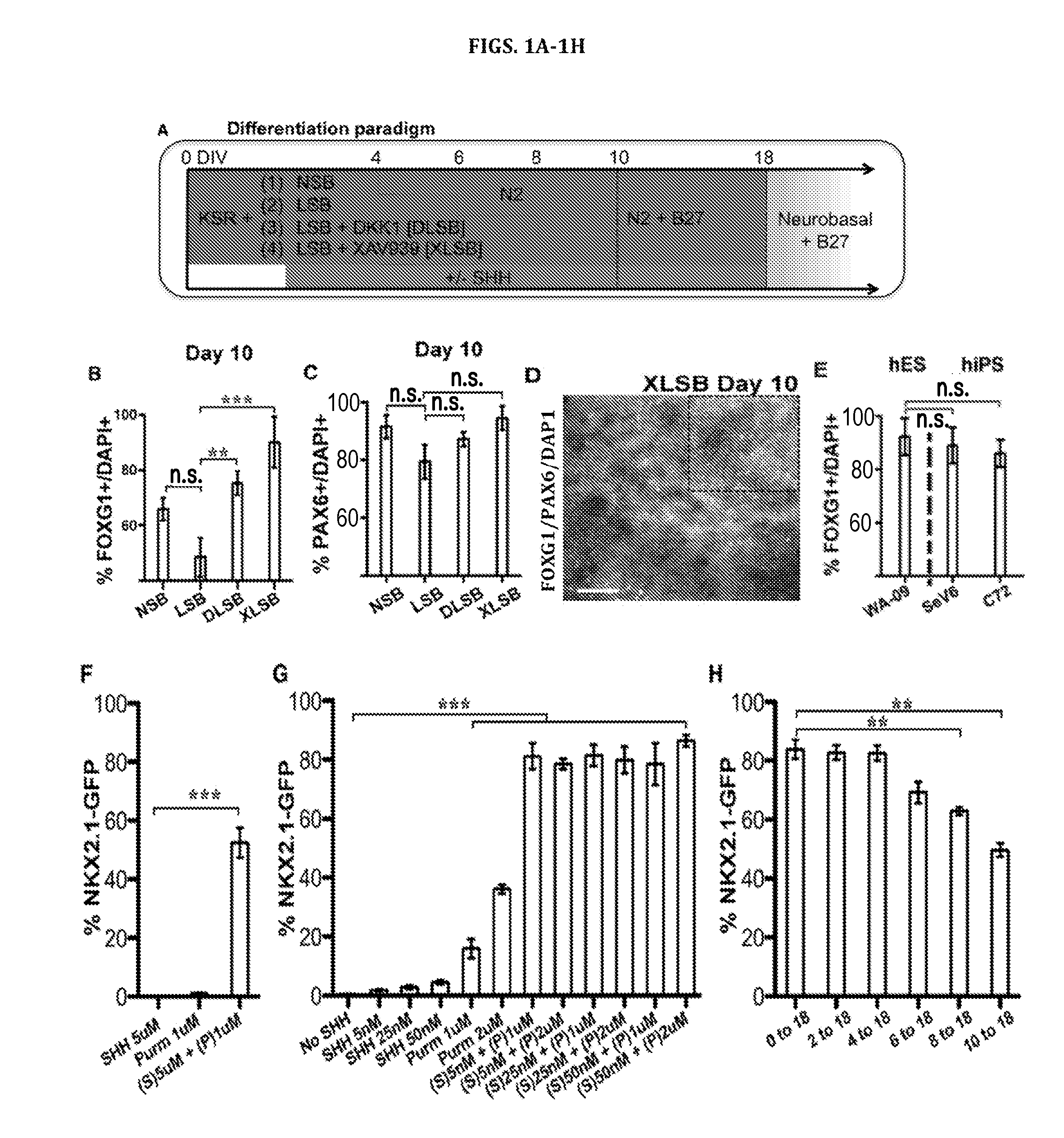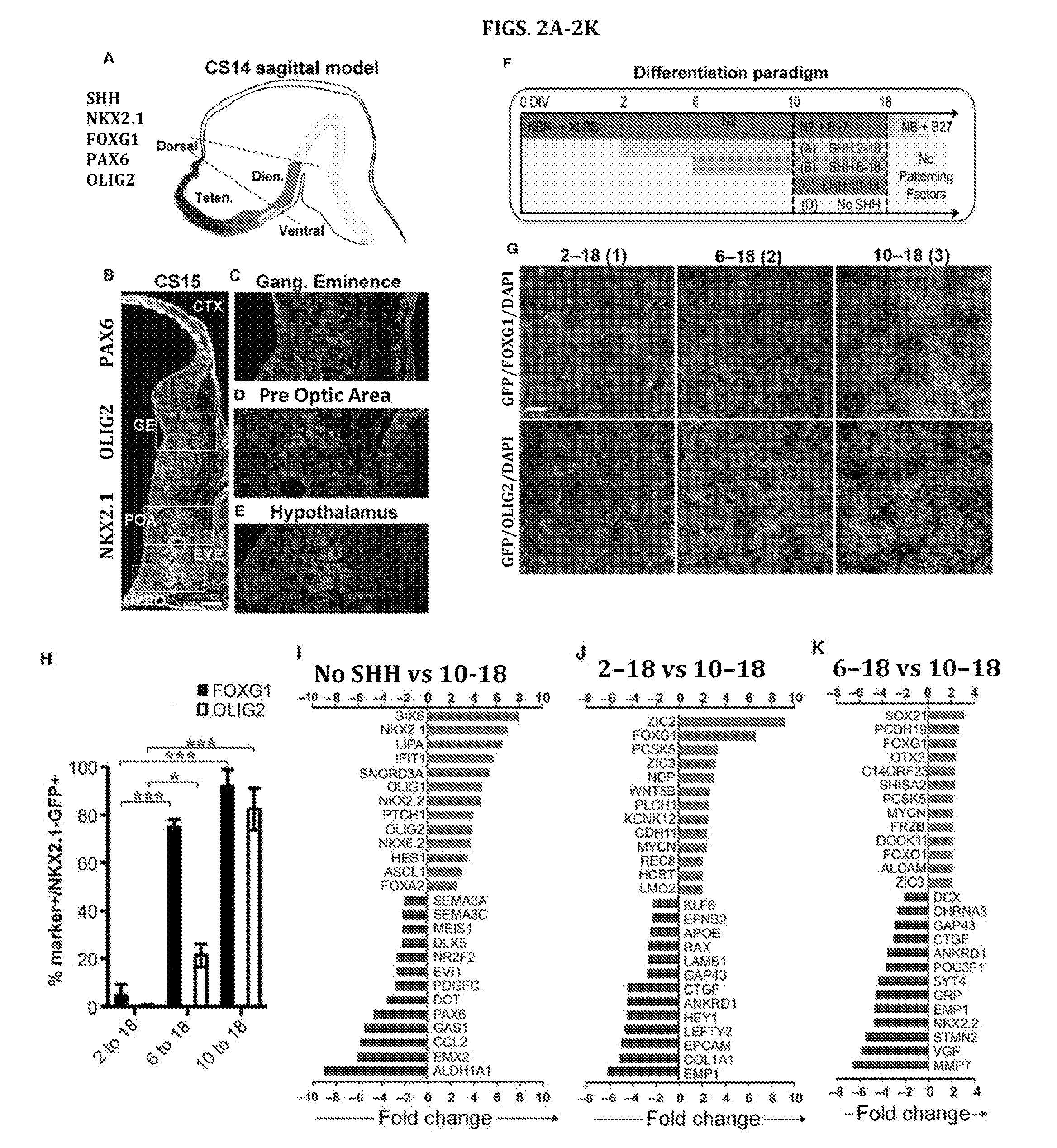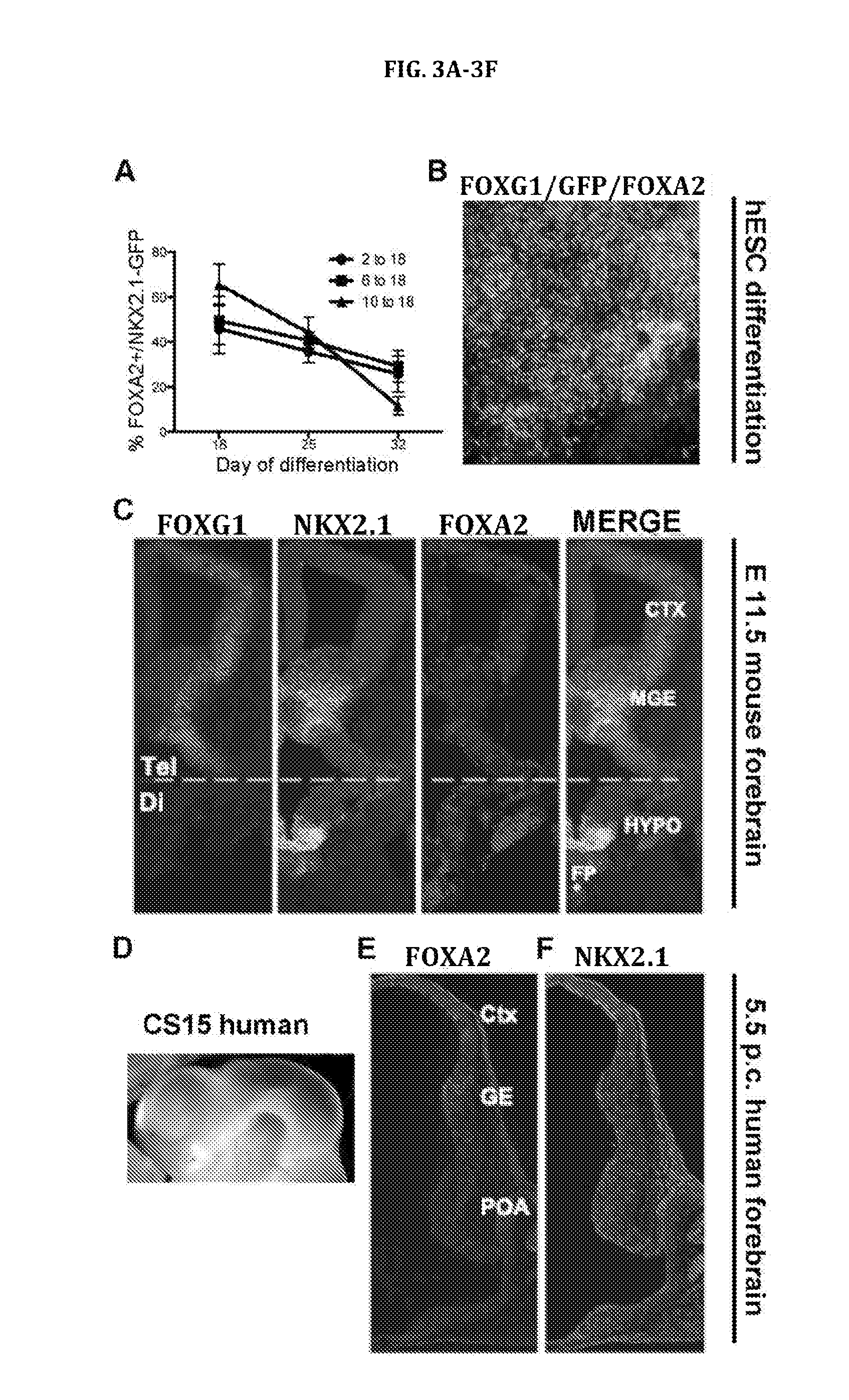Cortical interneurons and other neuronal cells produced by the directed differentiation of pluripotent and multipotent cells
a technology of interneurons and neuronal cells, which is applied in the field of in vitro differentiation of stem cells and neural progenitor cells, can solve the problems of insufficient utilization of neurological properties, difficult to obtain, and inability to achieve the effect of enhancing forebrain differentiation
- Summary
- Abstract
- Description
- Claims
- Application Information
AI Technical Summary
Benefits of technology
Problems solved by technology
Method used
Image
Examples
example 1
Induction of Forebrain Neural Progenitor Cells by the Combined Inhibition of SMAD and Wnt Signaling
[0341]This Example demonstrates neural progenitor cell generation can be achieved by the combined of inhibition of SMAD and Wnt signaling and the activation of SHH signaling.
[0342]The first step in modeling development of cortical interneuron and other neuronal cells is the robust induction of forebrain type neural progenitors. Specification of anterior / forebrain fate is considered a default program during neural differentiation of hPSCs (Chambers et al., Nat Biotechnol 27:275-280 (2009); Eiraku et al., Cell Stem Cell 3:519-532 (2008); Espuny-Camacho et al., Neuron 77:440-456 (2013); Gaspard et al., Nature 455:351-357 (2008)). However, not all cell lines adopt neural and anterior fates at equal efficiencies. Kim et al., Cell Stem Cell 8:695-706 (2011) and Wu et al., Proc Natl Acad Sci USA 104:13821-13826 (2007). Patterning factors secreted within differentiating cultures such as fibrob...
example 2
Induction of Distinct Ventral Progenitor Populations by Altering the Timing of SHH Activation
[0355]This Example demonstrates that distinct ventral progenitor cell populations can be generated by altering the timing of SHH activation of neuronal cells.
[0356]The efficient induction of NKX2.1 largely independent of the timing of SHH exposure from Example 1 raised the question of whether timing impacts the subtype of NKX2.1+ neural progenitor generated. Analogous to rodents, NKX2.1 is expressed during early neural human development in both the FOXG1+ telencephalon as well as in the FOXG1-negative ventral diencephalon. FIG. 2A shows a model of human prosencephalon (sagittal view at Carnegie stage 14 (CS14)) with expression of forebrain patterning markers based on published data. Kerwin et al., J Anat 217:289-299 (2010) and Rakic and Zecevic, Cereb Cortex 13:1072-1083 (2003). During embryonic mouse development NKX2.1 expression in the telencephalon (FOXG1+) is restricted to the ventral (s...
example 3
Directed Differentiation of Forebrain Neural Progenitor Cells into Neuronal Cells and the Migratory Properties of Those Neuronal Cells
[0381]This Example demonstrates the generation of neuronal cells by the directed differentiation of forebrain neural progenitor cells.
[0382]Cortical interneurons derived from the ganglionic eminence are particularly important in balancing excitation and inhibition within cortical circuitry. Moreover, cortical interneurons play key roles in controlling developmental plasticity and are dysfunctional in various pathological conditions including epilepsy, autism, and schizophrenia. Baraban et al., Proc Natl Acad Sci USA 106:15472-15477 (2009); Eagleson et al. Autism Res 4:68-83 (2011); Insel, Nature 468:187-193 (2010); Lewis et al., Nat Rev Neurosci 6:312-324 (2005); and Penagarikano et al., Cell 147:235-246 (2011).
[0383]Day 10-18 treated precursor cells express many of the transcription factors, including OLIG2, MASH1, and NKX6.2, which are markers of co...
PUM
 Login to View More
Login to View More Abstract
Description
Claims
Application Information
 Login to View More
Login to View More - R&D
- Intellectual Property
- Life Sciences
- Materials
- Tech Scout
- Unparalleled Data Quality
- Higher Quality Content
- 60% Fewer Hallucinations
Browse by: Latest US Patents, China's latest patents, Technical Efficacy Thesaurus, Application Domain, Technology Topic, Popular Technical Reports.
© 2025 PatSnap. All rights reserved.Legal|Privacy policy|Modern Slavery Act Transparency Statement|Sitemap|About US| Contact US: help@patsnap.com



